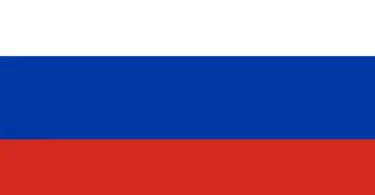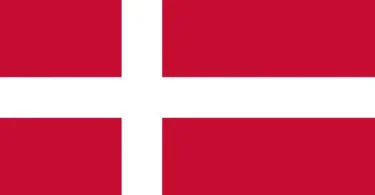Part 1. Preliminary 1. Constitution as the Fundamental Law 2. Sovereignty and State Authority 3. Nation 4. State of Nepal 5. Language of the Nation 6. National Flag 7. National Anthem etc Part 2. Citizenship 8. Citizenship at the Commencement of the Constitution 9. Naturalized or honorary citizenship 10. Acquisition and termination of citizenship 11. Deputation of citizenship teams Part 3. Fundamental Rights 12. Right to freedom 13. Right to equality 14. Right against untouchability and racial discrimination 15. Right relating to publication, broadcasting and press 16. Right relating to environment and health 17. Right relating to education and culture 18. Right relating to employment and social security 19. Right to property 20. Rights of women 21. Right to social justice 22. Rights of the child 23. Right to religion 24. Right relating to justice 25. Right against preventive detention 26. Right against torture 27. Right to information 28. Right to privacy 29. Right against exploitation 30. Right relating to labour 31. Right against exile 32. Right to constitutional remedies Part 4. Obligations, Directive Principles and Policies of the State 33. Obligations of the State 34. Directive principles of the State 35. Policies of the State 36. Questions not to be raised in court Part 4A. President and Vice-President 36A. President 36B. Election to President 36C. Term of office of President 36D. Qualification for President 36E. Vacation of office of President 36F. President to take oath 36G. Vice-president 36H. Vacation of office of Vice-president 36I. Other provisions relating to Vice-president 36J. Remuneration and facilities of President and Vice-president 36K. Office of President and Vice-president Part 5. Executive 37. Executive power 38. Formulation of Council of Ministers 39. Ministers of State and Assistant Ministers 40. Appointment of non-member of Legislature-Parliament as Minister 41. Remuneration and other facilities 42. Oath 43. Conduct of business of the Government of Nepal 44. Council of Ministers after formation of Constituent Assembly Part 6. Legislature-Parliament 51. Summoning and prorogation of sessions 52. Address by President 53. Quorum 54. Conduct of business in case of vacancy in membership 55. Voting 55A. Vote of confidence 56. Privileges 57. Procedures relating to conduct of business 57A. Opposition party 58. Committees 59. Powers of Legislature-Parliament to be exercised by Constituent Assembly 60. Restriction on discussion 61. Secretariat of Legislature-Parliament 61A. Secretary general and secretary of Legislature-Parliament 62. Remuneration Part 7. Constituent assembly 63. Constitution of Constituent Assembly 64. Term of Constituent Assembly 65. Qualification for member 66. Decision on question as to disqualification of member 67. Vacation of seat 68. Oath by member 69. Meeting of Constituent Assembly 70. Procedure for passing a Bill relating to the Constitution 71. Chairperson and Vice-chairperson of Constituent Assembly 72. Vacation of office of Chairperson or Vice chairperson 73. Quorum 74. Proceeding of Constituent Assembly in case the position of a member is vacant 75. Voting 76. Penalty for unauthorized presence or voting 77. Privileges 78. Procedures relating to conduct of business 79. Committees 80. Secretariat of Constituent Assembly 81. Remuneration 82. Dissolution of Constituent Assembly 83. To act in capacity of Legislature-Parliament Part 8. Legislative Procedure 84. Introduction of Bills 85. Procedure for passage of Bills 86. Withdrawal of Bills 87. Authentication of Bills 88. Ordinance Part 9. FINANCIAL PROCEDURE 89. No tax to be levied or loan to be raised except in accordance with law 90. Consolidated Fund 91. Expenditures from Government Fund or a consolidated fund 92. Expenditures chargeable on Consolidated Fund 93. Estimates of revenues and expenditures 94. Appropriation Act 95. Supplementary estimates 96. Votes on account 96A. Special provision relating to revenues and expenditures 97. Votes of credit 98. Contingency Fund 99. Act relating to financial procedures Part 10. JUDICIARY 100. Courts to exercise powers relating to Justice 101. Courts 102. Supreme Court 103. Appointment and qualification of Judges of the Supreme Court 104. Conditions of service and facilities of Chief Justice and Judge 105. Chief Justice and Judge of Supreme Court to be relieved of office 106. Chief Justice and Judge not to be engaged in any other assignment 107. Jurisdiction of the Supreme Court 108. Establishment, management and jurisdiction of Appellate Courts and District Courts 109. Appointment, qualification, conditions of service and facilities of Judges of Appellate Courts and District Courts 110. Judge of Appellate Court and District Court not to be transferred to or engaged in any other assignments 111. Transfer of cases 112. Responsibility of Chief Justice 113. Judicial Council 114. Judicial Service Commission 115. Duty to extend cooperation to the Courts 116. Orders and decisions of Courts to be binding 117. Annual report 118. Constituent Assembly Court Part 11. COMMISSION FOR THE INVESTIGATION OF ABUSE OF AUTHORITY 119. Commission for the Investigation of Abuse of Authority 120. Functions, duties and powers of the Commission for the Investigation of Abuse of Authority 121. Annual report Part 12. AUDITOR GENERAL 122. Auditor General 123. Functions, duties and powers of the Auditor-General 124. Annual report Part 13. PUBLIC SERVICE COMMISSION 125. Public Service Commission 126. Functions, duties and powers of Public Service Commission 127. Annual report Part 14. ELECTION COMMISSION 128. Election Commission 129. Functions duties and, powers of Election Commission 130. Government of Nepal to provide necessary employees to Election Commission Part 15. NATIONAL HUMAN RIGHTS COMMISSION 131. National Human Rights Commission 132. Functions, duties and powers of National Human Rights Commission 133. Annual report Part 16. ATTORNEY GENERAL 134. Appointment of Attorney General 135. Functions duties and power of Attorney General 136. Annual report 137. Right to appear in Legislature-Parliament Part 17. STRUCTURE OF STATE AND LOCAL SELF-GOVERNANCE 138. Progressive restructuring of the State 139. Provisions on local self-governance 140. Arrangement and mobilization of revenue Part 18. POLITICAL PARTIES 141. Prohibition on imposition of restrictions on political parties 142. Registration required for securing recognition for the purpose of contesting elections as political party Part 19. EMERGENCY POWER 143. Emergency Power Part 20. PROVISIONS RELATING TO ARMY 144. Constitution of the Nepal Army 145. National Defence Council 146. Transitional provisions on combatants 147. Management and monitoring Part 21. AMENDMENT TO CONSTITUTION 148. Amendment to Constitution Part 22. MISCELLANEOUS 149. Constitutional Council 150. Nepalese ambassadors and emissaries 151. Pardons 152. Titles, honors and decorations 153. Constitution of Government Service 154. Constitution of commissions 154A. Election Constituency Delimitation Commission 155. Provisions relating to hearing about, and citizenship of officials of Constitutional Bodies 156. Ratification of, accession to, acceptance of or approval of, treaties or agreements 157. Power to make decision through referendum 158. Power to remove difficulties Part 23. TRANSITIONAL PROVISIONS 159. Properties to be held in trust 160. Provisions relating to the Council of Ministers 161. Provisions relating to the Legislature-Parliament 162. Provisions relating to Judiciary 163. Provisions relating to Constitutional Bodies and, Officials thereof 164. Existing laws to remain in force Part 24. DEFINITIONS 165. Definitions Part 25. SHORT TITLE, COMMENCEMENT AND REPEAL 166. Short title and commencement 167. Repeal Schedule 1. NATIONAL FLAG (Relating to Article 6) A. Method of making the shape inside the border B. Method of making the moon C. Method of making the sun D. Method of making the border Explanation Schedule 4. The Comprehensive Peace Accord concluded between the Government of Nepal and Communist Party of Nepal (Maoist) (Relating to clause (3) of Article 166) Preamble 1. Preliminary 2. Definitions 3. Political-economic-social transformation and conflict management 4. Management of armies and arms Relating to the Maoist army Relating to the Nepal Army 5. Ceasefire 6. Cessation of hostilities 7. Observance of human rights, fundamental rights al humanitarian law 8. Settlement of differences, and implementation mechanism 9. Implementation and monitoring 10. Miscellaneous Schedule 5. Agreement on Monitoring of the Management of Arms and Armies Preamble 1. Modalities of the Agreement 1-1. Principles 1-2. Definitions 1-3. Promotion 1-4. Phases 2. Reporting and verification 3. Redeployment and concentration of forces 4. Maoist Army cantonment, barracking of the NA and arms control 4-1. Maoist army cantonment 4-1-1. Commanders’ responsibilities 4-1-2. Weapons storage and Control 4-1-3. Registration of Maoist army combatants at cantonment sites 4-2. Barracking of the Nepal Army 4-2-1. General regulations 4-2-2. Commander responsibilities 4-2-3. Weapons storage and control 4-2-4. Deployment and Concentration of Forces – NA permitted activities 5. Compliance with the Agreement 5-1. Prohibited Activities 5-2. Permitted activities 5-3. Violations 6. The United Nations Mission 6-1. The Joint Monitoring Coordination Committee 7. Miscellaneous
This Constitution may be called “Interim Constitution of Nepal, 2063(2007)”.
This Constitution shall be promulgated by the House of Representatives and ratified by the Interim Legislature-Parliament. The details in relation to its implementation shall be as mentioned in Schedule 3.
The Comprehensive Peace Accord and the Agreement on Monitoring of the Management of Arms and Armies concluded between the Government of Nepal and CPN (Maoist) on 5 Mangsir 2063 (21 November 2006) and 22 Mangsir 2063 (8 December 2006), respectively, are in Schedule-4.
This Constitution shall come into force on Monday, the first day of the month of Magha of the year 2063 Bikram Sambat (15 January 2007).
The Constitution of the Kingdom of Nepal, 2047(1990) is, hereby, repealed.
Get more fascinating contents like this on Facebook .






